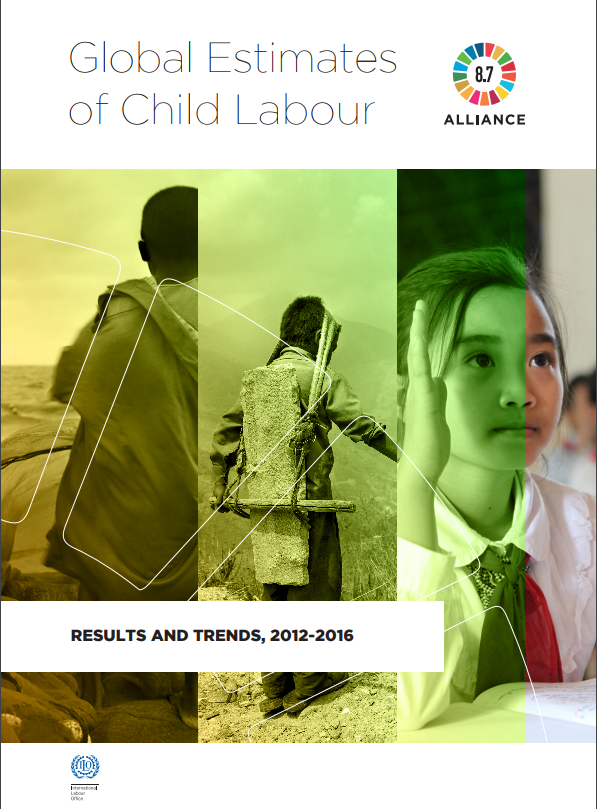The new global estimates are a collective effort from members of Alliance 8.7, the global partnership to end forced labour, modern slavery, human trafficking and child labour that brings together key partners representing governments, UN organisations, the private sector, workers’ and employers’ organizations and civil society in order to achieve Sustainable Development Goal Target 8.7.
The 2017 Global Estimates can be found online here.
Facts and figures
- Worldwide 218 million children between 5 and 17 years are in employment.
Among them, 152 million are victims of child labour; almost half of them, 73 million, work in hazardous child labour.
- In absolute terms, almost half of child labour (72.1 million) is to be found in Africa; 62.1 million in the Asia and the Pacific; 10.7 million in the Americas; 1.2 million in the Arab States and 5.5 million in Europe and Central Asia.
- In terms of prevalence, 1 in 5 children in Africa (19.6%) are in child labour, whilst prevalence in other regions is between 3% and 7%: 2.9% in the Arab States (1 in 35 children); 4.1% in Europe and Central Asia (1 in 25); 5.3% in the Americas (1 in 19) and 7.4% in Asia and the Pacific region (1 in 14).
- Almost half of all 73 million children victims of child labour are aged 5-11 years.
42 million (28%) are 12-14 years old; and 37 million (24%) are 15-17 years old.
- Hazardous child labour is most prevalent among the 15-17 years old. Nevertheless up to a fourth of all hazardous child labour (19 million) is done by children less than 12 years old.
- Among 152 million children in child labour, 88 million are boys and 64 million are girls.
- 58% of all children in child labour and 62% of all children in hazardous work are boys. Boys appear to face a greater risk of child labour than girls, but this may also be a reflection of an under-reporting of girls’ work, particularly in domestic child labour.
- Child labour is concentrated primarily in agriculture (71%), which includes fishing, forestry, livestock herding and aquaculture, and comprises both subsistence and commercial farming; 17% in Services; and 12% in the Industrial sector, including mining.

